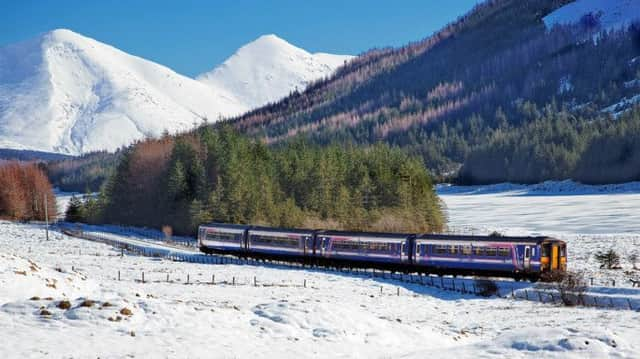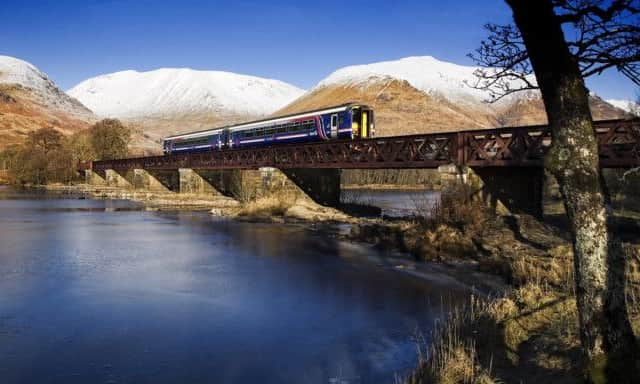Glasgow to Oban train trip one of Scotland’s finest


The early morning mist hanging low over the glens and mountains and our arrival at Oban’s harbourside station – the listed building, then still served by a through sleeping car from London Euston, was sadly demolished in the 1980s. There we transferred to a paddle steamer for a cruise along the Sound of Mull to Tobermory. It was a gloriously hot day but over all too quickly before we returned to Oban for the long train journey home.
While we can still travel by train to Oban the first part of the journey today is quite different to the one that I took in 1964.
Advertisement
Hide AdFinally fully open in 1880 the route of the Callander & Oban Railway (C&OR) branched off from the Glasgow to Perth main line at Dunblane. From here it headed to Callander before threading through the Pass of Leny, then alongside Loch Lubnaig to the start of the climb up through Glen Ogle to remote Killin Junction, for the branch line to Killin and Loch Tay. From Killin Junction the C&OR main line headed west along Glen Dochart to Crianlarich Lower station. Sadly, the line was listed for closure in the 1963 Beeching Report – the date was fixed for 1 November 1965 but a rockfall in Glen Ogle on 27 September that year brought a premature end to proceedings and it never reopened. Walkers and cyclists can still enjoy this route at a more leisurely pace as much of the trackbed between Callander and Killin is now a footpath and cycleway.


However, since the closure of this highly scenic route, Oban-bound trains now travel via the equally scenic West Highland Line as far as Crianlarich where the original C&OR main line is rejoined for the journey west along Strath Fillan to Loch Awe and through the Pass of Brander.
Diesel trains for the 101-mile journey to Oban depart from Glasgow’s Queen Street station and after threading through the suburbs reach the north bank of the Clyde, passing through Bowling and Dumbarton to Craigendoran Junction where the line becomes single-track. Now heading north alongside Gare Loch, trains reach Garelochhead station before climbing up to the summit of the line alongside Loch Long at Glen Douglas.
From the summit, the line dips down to Arrochar & Tarbet station before heading north on a ledge alongside Loch Lomond to Ardlui and then up Glen Falloch to Crianlarich. In recent years lineside tree clearance along this section has opened up stunning views of the loch and the surrounding mountains.
At Crianlarich, famous for its station tea room, the train is divided with half continuing to Fort William along the West Highland Line and the other half to Oban. From Crianlarich, Oban-bound trains head west along Strath Fillan to Tyndrum Lower and then down Glen Lochy to Dalmally. West of here, this scenic line skirts around the northern arm of Loch Awe, serving stations at Loch Awe, where there is a camping coach, and Falls of Cruachan which is a seasonal request stop for Munro baggers and visitors to the nearby hydro-electric power station set deep inside Ben Cruachan. Rockfalls are a constant threat along this stretch and trains are protected by an ingenious method of 17 old-fashioned semaphore signals that are linked to a screen of trip wires known as Anderson’s Piano.
From Falls of Cruachan trains continue through the Pass of Brander to reach Taynuilt on the shore of Loch Etive. Following the south shore of the loch westwards, trains then call at Connel Ferry station, once the junction for the Ballachulish branch until its closure in 1966 – the imposing cantilever bridge across the loch which once carried both road and railway is still open to vehicles.
Advertisement
Hide AdThe final part of this journey takes trains inland before they loop down through a rock cutting into Oban. Located right next to the bustling ferry terminal, the modern station is the ideal starting point to set out and discover the delights of the town which include harbourside seafood restaurants, the Oban Distillery, McCaig’s Tower, the War and Peace Museum and St Columba’s Cathedral. For island hoppers ferries serve the two nearby islands of Lismore and Kerrera as well as Mull, Coll, Tiree, Colonsay and Barra.